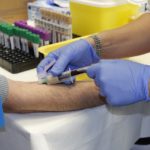How to Become a Phlebotomist
A phlebotomist is a medical technician who draws and prepare blood samples for medical testing, transfusions or donation. Phlebotomists collect blood using different techniques, depending on the situation, including venipuncture, finger pricks or heel pricks when draw a blood sample from an infant.
If you enjoy working with people in a medical setting where you can play an important role in healthcare outcomes while earning good pay, this might be the career path for you.
Phlebotomists generally work in hospitals, clinics, outpatient care centers, diagnostic laboratories and blood donation facilities.
To become a phlebotomist you will need to complete a certificate or diploma program in phlebotomy. Certificate programs can be completed in less than a year, while a diploma might take a year or more to earn. Phlebotomists usually enter the profession with a postsecondary non-degree credential from a phlebotomy program. This means a minimum of a high school diploma plus training and certification from an accredited phlebotomy program. Specific training and certification requirements can vary state-to-state so it’s important to check the regulations where you live.
Almost all employers will only hire phlebotomists who have earned professional certification. This is due to the critical importance of medical safety and liability issues.
The average wage for phlebotomists is $35,510 per year, according to the U.S. Bureau of Labor Statistics.
This is an in-demand field. Employment of phlebotomists is projected to grow 23 percent through 2028, much faster than the average for all U.S. occupations. Hospitals, diagnostic laboratories, blood donor centers, and other locations will continue to need phlebotomists to perform bloodwork.
Resources to help in starting or expanding your Phlebotomist career:
- Phlebotomist Certification Programs and Training
- Phlebotomist Associations
- Phlebotomist Networking Groups





